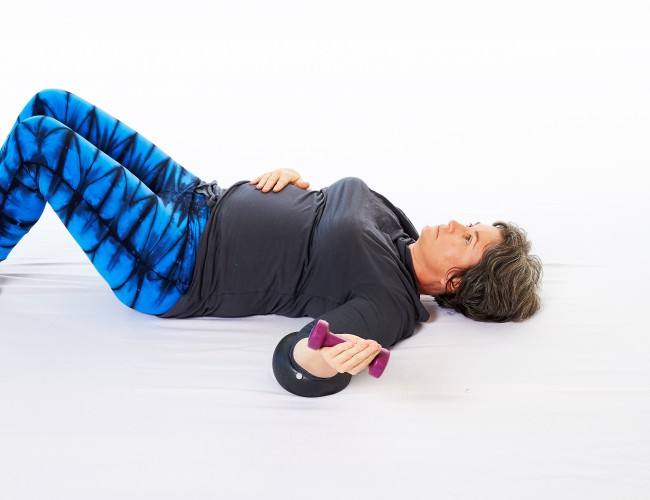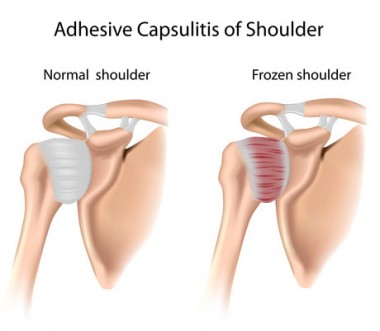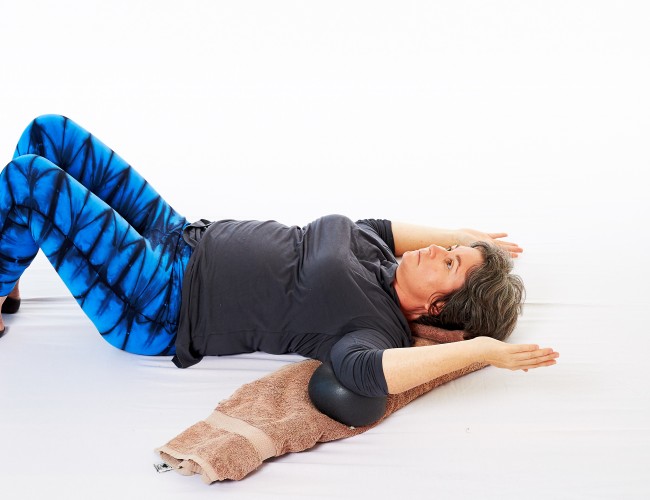Frozen shoulder exercises
Thu,May 12, 2016 at 11:40AM by Body Organics
Could you be suffering from frozen shoulder AKA adhesive capsulitis?
Do you have difficulties putting your hands behind you head? Lifting your arms out to the sides? Reaching into your back pocket? Doing up your bra? You may have frozen shoulder.
Frozen shoulder symptoms
Adhesive capsulitis, commonly referred to as frozen shoulder, is a condition characterised by a gradual increase in painful and restricted shoulder range in certain directions called a capsular pattern. The cause of frozen shoulder is unknown, but is associated with inflammation in the joint and contraction of the shoulder capsule and coracohumeral ligament. Frozen shoulder is quite common in women aged 40-65 and associated risk factors include diabetes, other shoulder conditions, trauma, prolonged immobilisation, thyroid disease, Parkinson’s disease and cardiovascular conditions. Frozen shoulder can last anywhere from 6 months to 3 years, with progress through three stages.
The three stages of frozen shoulder:
// Freezing/painful stage: Pain at rest and with movement – lasts 3-9 months
// Frozen/stiffening stage: Pain starts to subside, but range of motion decreases. Pain often occurs at end of range movement – lasts 4-12 months
// Resolution/thawing stage: Progressive improvement in pain and stiffness. Full range may never be regained – lasts 1-3 years
Frozen shoulder exercises:
First stage:
Exercise focus should be on maintaining range and decreasing pain. Examples of such exercises include:
// Pendulums and pulleys (1 minute each direction)
// Passive range of motion exercises
// Coracohumeral ligament stretches
// Isometric strengthening – flexion, extension, abduction, adduction, Internal rotation, external rotation – 5 seconds x 10
Second stage:
Exercise focus should be on decreasing stiffness and increasing range of motion. Potential exercises include:
// Active range of motion exercises
// Strengthening through range using resistance such as a theraband
Third stage:
Exercise focus should be on strengthening and progressing range of motion exercises. Example of exercise includes:
// Strength exercises – same directions with dumbbells. Starting at 0.5-1 kg – 2-3 seconds x 10-12
Click here to see more frozen shoulder exercises.
Many shoulder conditions present similarly to frozen shoulder, including osteoarthritis, rotator cuff pathologies and acute bursitis/tendinitis. A physiotherapist can differentiate between these conditions, and begin treating your symptoms with the most current evidence available. If you think you might be suffering from frozen shoulder, contact us today to discuss your treatment options.
Kirsten Wilkes practises physiotherapy at Body Organics in Brisbane. Kirsten began her career by undertaking a Bachelor of Science (Honours in Kinesiology) at McMaster University in Canada and followed up with a Masters of Physiotherapy Studies at University of Queensland. Kirsten’s background gives her a solid exercise foundation and rehabilitation focus.
 0
0 

